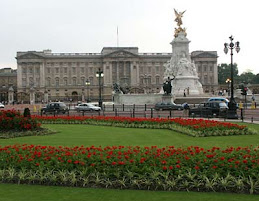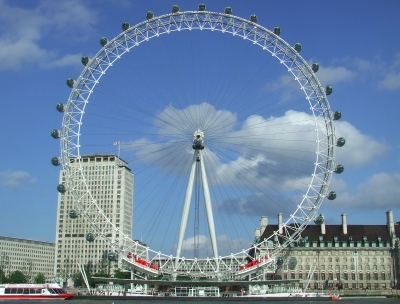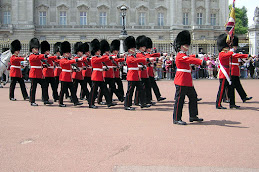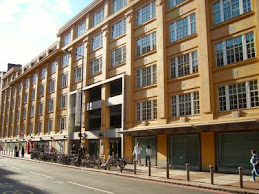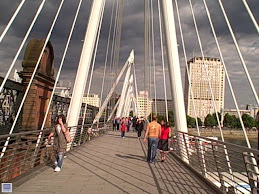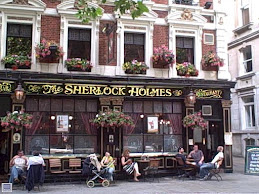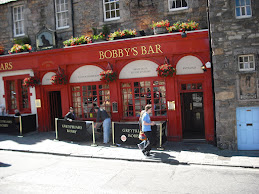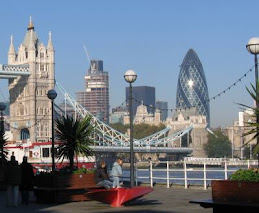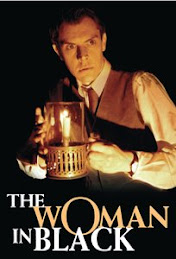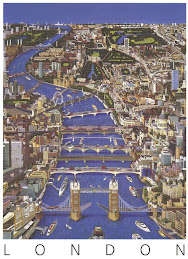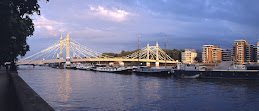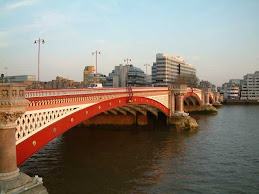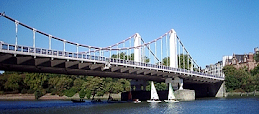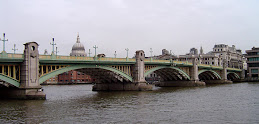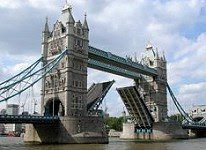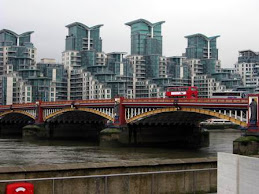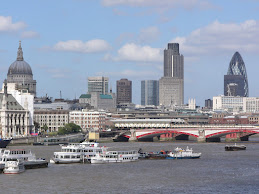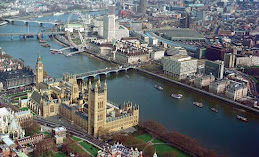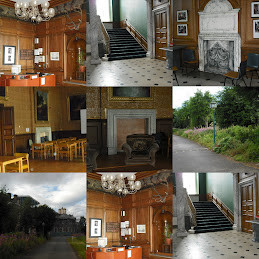
“The train is rolling down the track,
Listen to the wheels go clickety clack,
Over the bridge, around the bend,
Taking me for a ride.”
Phil Rosenthal, The Green Grass Grew All Around
On the Road Again: From Paddington Station to Oxford we Go!
An early morning walk to the underground train (the Tube) at Waterloo station nearest King’s College’s Stamford Street dormitories to make a quick transfer from the Northern line to the Bakerloo Line brought the SLIS class of 14 directly to Paddington Station (15 with teacher!). Once there with ample time to browse for a short spell, we spread out to do such things as get coffee, shop, and take pictures of the well known Paddington Bear Bronze statue for about fifteen minutes prior to meeting up in front of the train station for departure. Paddington Station is named for the famous Paddington Bear created by the English writer Michael Bond half a century ago. The fictional story of the famous Paddington Bear whose story began when the bear was left at Paddington Station and taken from the ‘lost and found’ is of a bear that wears a duffle coat and a shapeless hat and lives with the adoptive Brown family at 32 Windsor Gardens. There was a precious little commemorative Paddington Bear gift shop that many students stopped at to either buy travel gifts for the younger ones at home or just to preview the cute little stuffed Paddington bears and other miscellaneous Paddington items. Most everyone grabbed a coffee or a quick breakfast to fully fuel up prior to what seemed to be a full day ahead.
Once the group met up following the brief leisure time at Paddington station, the train tickets to Oxford were dispersed and we headed towards the train to mount. The smooth sailing, hour-long journey was a scenic ride through the countryside. Arrival at Oxford came swiftly after chatting with my next door dorm neighbour Sheila and reading over the informational handout nicely given to us by our professor that offered a history of Oxford with additional information on Oxford tours and walks available to us following our scheduled library visit. Reading about Oxford has given me a preview of a city that is very famous for its university and historically for housing and educating students.
Origins of the ‘Old and New’ Bodleian Library: Continued Growth and Union with the Radcliff Library Collections
The Bodleian Library at Oxford University is the chief deposit library as it opened in 1602 and incorporated in the book collections of the Duke of Gloucester from the earlier library in the fifteenth century. Serving students and scholars worldwide, Oxford University’s Bodleian Library is the second largest library in the United Kingdom and is centrally located in the academic heart of the campus. The library was initially funded by Thomas de Cobham, the Bishop of Worchester. It moved to a new space as a gift to the University by the younger brother of King Henry V, the Duke of Gloucester. The library was given his original manuscripts and classical text volumes. The overcrowding this created dictated the construction of a new location in 1444, north of the campus, above the Divinity School that was completed in 1488. This Duke Humfrey’s library survived for over 60 years as it was until books were purged that had traces of Catholicism and superstition as ordered by King Edward VI. Because the university funding to restore the collection was lacking for the library, Sir Thomas Bodley donated large sums of money in 1598 and his new collection of 2,500 books to the library. Of importance to the re-building of the library collection was that in 1610, Bodley arranged a contract with the Stationer’s Company of London to receive one copy of every book published in England and registered with the Stationer’s Hall. Because this created a challenging situation due to the space needed to store such an ever expanding collection, Bodley funded and carefully planned the first extension of the medieval building in 1610, called the Arts End. There were numerous other extensions to follow that came about after his death, most notably the will mandated an enormous amount of money would be used to create a storage site for books on the third floor and also became a photo gallery and museum for the institution. The later Seldon End extension to the library came about in 1634, following a large book donation to the University by the attorney John Seldon. He donated over 8,000 books to an ever-growing library collection. It was because of this extension that the library was able to accept other book and manuscript gifts. Some notable donations were made by those such as the third Earl of Pembroke in 1629, Sir Kenelm Digby in 1634, and William Laud-Archbishop of Canterbury in 1635. Of interest is that this library is not a lending library and that even King Charles I was refused borrowing rights in 1645!
Following a drought in University funding of the library in the early eighteenth century, collections development disappointingly slowed until a very successful Dr. John Radcliffe, an English Physician, donated a tremendous sum of money to purchase land for a new building on the southern side of the campus quadrangle, with enough money to pay a librarian and buy more books. What came about is the construction of the classical circular domed building that opened in 1749. What was then called the Radcliffe Library grew to incorporate a collection that sparked a new interest in its patrons with items on the subjects of sciences and natural history following a waning period of non-use and lack of readers. Because the Bodleian collections continued to grow due to gifts and ample funding, ground level lecture rooms were taken over for library use and storage in 1788. A union of the Bodleian and the Radcliffe libraries were united in 1860, with a reading room on the upper level and the stacks on the ground floor. By 1914, the collection was growing beyond the million mark per year. An underground storage area was a critical formation to help with the storage issues and was called the underground book store that was known to be the largest in the world at the time. In 1931, an enormous extension of the library took place, with a new building, the New Bodleian, being constructed in 1937. It is not open to the public, is more urban in structure and houses stacks, reading rooms, offices and a specialized library. The collection at the Bodleian Library maintains not only books and manuscripts, but pictures, coins, medals, sculpture, scientific objects and objects of other historical or eclectic interests. An underground tunnel with a conveyor helps to transport the books and other items to the library for reading and research purposes within the patron reading rooms.
With a mission to maintain and develop the collections and services offered by the library, it was Sir Thomas Bodley’s goal to support the teaching and research needs of the University and scholarly patrons nationally and internationally. The Friends of the Bodleian Library proudly aid Oxford University in continued restoration and growth efforts by raising the funds to enrich collections and other items that the library would not have been able to afford otherwise. In turn, these efforts strengthen the library’s opportunities to acquire outside funding sources, such as grants.
A Tour by Mr. Sydney Hicks, Bodleian Library Docent:
After doing some extensive reading on this library, the tour given by a Mr. Sydney Hicks was a nice introduction to this academic and deposit library at Oxford University. He told our group that the library was 400 years old and founded in 1602 by Sir Thomas Bodley with a goal of serving scholars around the world. For statistical purposes, he told us that over 5,000 readers use the library daily, with only 5 percent living outside of the United Kingdom. He let us know he would introduce how the library is surviving in the new age of digitization. Introducing the library as a reading library, it offers nine separate reading rooms throughout Oxford.
The Collection:
Of surprise to me was the fact that the Bodleian Library provides documents signed by Queen Elizabeth I and electronic resources. It is one goal of the library to extend the electronic collections through purchase agreements with other academic institutions and other publishers. According to Mr. Sydney Hicks, the much broader digital goal is to “digitize everything” in the collection! The collection comprises over nine million printed books, over one million maps, over one and a half million pieces of ephemera (ie. Postcards, leaflets, pamphlets) well over three and a quarter million prints, and more than 10,000 pieces of music. So far the library has digitized over one million books, mimicking the huge digital project in order at GOOGLE. Mr. Hicks stated that the library will digitize the collection jointly with other like institutions to broaden access to the collections for research needs.
The Bodleian Library is a legal depository and is entitled to receive, as I have stated in the background history, a free copy of all published works in the United Kingdom. Of popular interest, the library has all of the Harry Potter books and related books with Latin translations, housed in the Infirmary Room. With religious influences in the collection, the library motto is “the Lord is my Light”.
Highlight on the Value of Digitization Efforts:
Mr. Hicks offered the pro’s of digitization of the Bodleian Library collection. He stated that the library was concerned with advancing the accessibility of the collection and all of its advantages. Of notable mention is the desire for a more searchable database with enhanced resolution that is useful for patrons. More information on digitization is forthcoming and will follow the new Bodleian library discussion in this journal entry (See: Digitization Continues).
The Building up of a New Bodleian Library:
The core of the building was explained to having beginnings with the Divinity School. The School was built in 1420 and for 50 years was a lecture theatre. Historically, the funding to build the library took much time with the ongoing war to complete the building plans. Formerly, the college offered subjects on divinity/theology and housed a library above, pre-dating the Bodleian Library. The collection maintained recommended European manuscripts. The intricately elaborate interior ceiling of what was the Divinity School has undergone some alterations as well as other parts of the room, including the replacing of the smashed stained glass windows that occurred after the Reformation. The many unique heraldic symbols found on the ceilings in the interior of what was the Divinity School offered initials and religious images. Examples of the very ornate and well intact/preserved symbols are the Holy Trinity, Coats of Arms for those individuals such as found for the Kemp families, the Bishop of London, pagan and secular images, and a Mother Mary and Christ Child carved boss over a crescent moon and surrounded by sun rays. According to our tour guide Sydney Hicks, the donor John Kemp, who gave a tremendous sum of money for the library and is even today, still mentioned in Church services! This Divinity School room was a classroom that had wooden desks and a large pulpit remaining. I was very surprised with the good condition that the furniture was in over the course of time. The ceiling itself remained intact and survived as the result of its flat construction, with the pressure from the library above diverting the pressure/weight onto the arched posts along the edges of the room. The symbols found on the ceiling had some damage during the reformation, as the crucifix was taken off by the extremists/reformists. The carved boss of St. John was testament to this, as he was beheaded.

The room leading into the Convocation Room (meaning “congregation” room) was an authentic parliament room that used to be the main governing body and housed 1630 furnishings. Mr. Hicks told our group that today this room houses the election of the University Chancellor. The size of the room is too small for larger numbers of people such as needed for the members of the Parliament or the European Committee. Interestingly, we learned that Nelson Mandela received his degree there, and oddly a wedding party and disco party was held in the room, having rented it out the room for the special events.
Up-Up-Upstairs and Away: More about the Bodleian Library Collection and Building
The venture up to the Bodleian Library upstairs was quite a climb up the steep stairwell! Our tour guide let us know that it is the oldest university research library in the country and second to the British Library. He told us that with the growth the library has seen with benefactors, many books, documents and letters from the 1640’s/ Civil War period was acquired from their own collections and that new purchases were made for the library as well by the benefactors. Over 3,000 new books come in a week currently and according to our guide the increases in the CD collection are mounting amazingly to over 20,000 per week. I wondered if I wrote or heard that number incorrectly!
The group was lead to the East End that was opened up for books years ago. The items are chained to the lecturns (bookshelves) interestingly and even King Edward VI who accessed the collection was unable to check them out as the items were bound to the building and not accessible to patrons with lending rights. Yet, it was the king whom later dictated that some of the religious books (Catholic) were to be either dispersed, destroyed (burned), or given to the government. Some of the bindings were sold, but many were destroyed, so the collections were depleted. It was then that Bodley as a former student there, later a lecturer, linguist and ambassador for Queen Elizabeth I, had a desire to do something for his country. He was a wealthy and successful merchant with family money (two fortunes), so with the will and desire to help, he decided to rebuild the ceiling/roof of the Library and all new bookcases were put in. Additionally, Bodley purchased over 2,000 volumes of scholarly books in many languages. According to our guide, Bodley decided to think globally with the library. He started a catalog to make the collection more accessible for patrons from all over and may be why scholars came from all over Europe to use the collection. It was about this time of renovation that the books had to be chained to the lecterns in order to protect the library collection. As an aside to illustrate the oddity, yet importance of chaining books to the bookshelves, Mr. Hicks told the group that it was about 1610 when Bodley bought 1,000 books and correspondingly 1,000 chains! Books were chained at the Bodleian Library for over 200years! In a positive light, this chaining of books in turn encouraged the benefactors to give more money!
A Glimpse of the Collection and Services:
Patrons are allowed to request items in the collection for research work but may not check them out. Request slips are used by library workers to help locate items pulled from the shelves. We located some of these very slips sticking out from the stacks to mark to spot of insertion for the library staff that will bring the item back. We were told that as of today, there are now over 30 reading rooms for patrons. In the book stacks that are housed in the underground room across the street, a conveyer belt is found that can hold over three million items to transfer to patrons from the requesting locations. Due to the size of the collection and the location, it can take up to three hours to receive an item, so a patron must be patient and agreeable to wait. Our guide mentioned that a very valuable and precious item in this underground collection is the Magna Carta!! It is stored on the J floor. The New Bodleian Library is a storehouse of many precious items such as this, yet other parts of the collection are stored in other facilities because there are too many books and extensions have to be continually built.
Digitization Continues:
To finish up with digitization, this elderly guide was surprisingly taken with the topic and how the Bodleian library of modern times is handling and keeping up with modern library access issues given the Internet. The Bodleian library is involved with digitization through the American Institute’s Folger Library to digitize Shakespeare plays for conservational purposes to align with Bodley’s mission to advantageously make the collection globally accessible. Of items that will or have been digitized are books of plays that have shown high use with considerable wear and tear due to reader interaction that indicates something about its age and popularity. The goal is to digitize all collections in order to meet with the library visions, but since the library receives free copies of all published works in the UK, this is a daunting task!
Storage and Preservation:
A more reasonable goal is one that strives to build a new depository to hold 8.2 million books. This depository aims to offer robotic assistance in collecting books! The storage space aims to offer an environment conducive to preservation with an offer of a very low oxygen content to slow the decay of materials, lessen the chances of fire and deter insects in the felt. All items in this room will be placed into preservation boxes to protect the books.
Tyack, G. (2005). The Oxford Bodleian library. Oxford: University of Oxford.
Websites of Interest:
The City of Oxford
Bodleian Library
Paddington Bear
The World's Largest Print Store: Posters, Prints & Frames/Search: Bodleian
